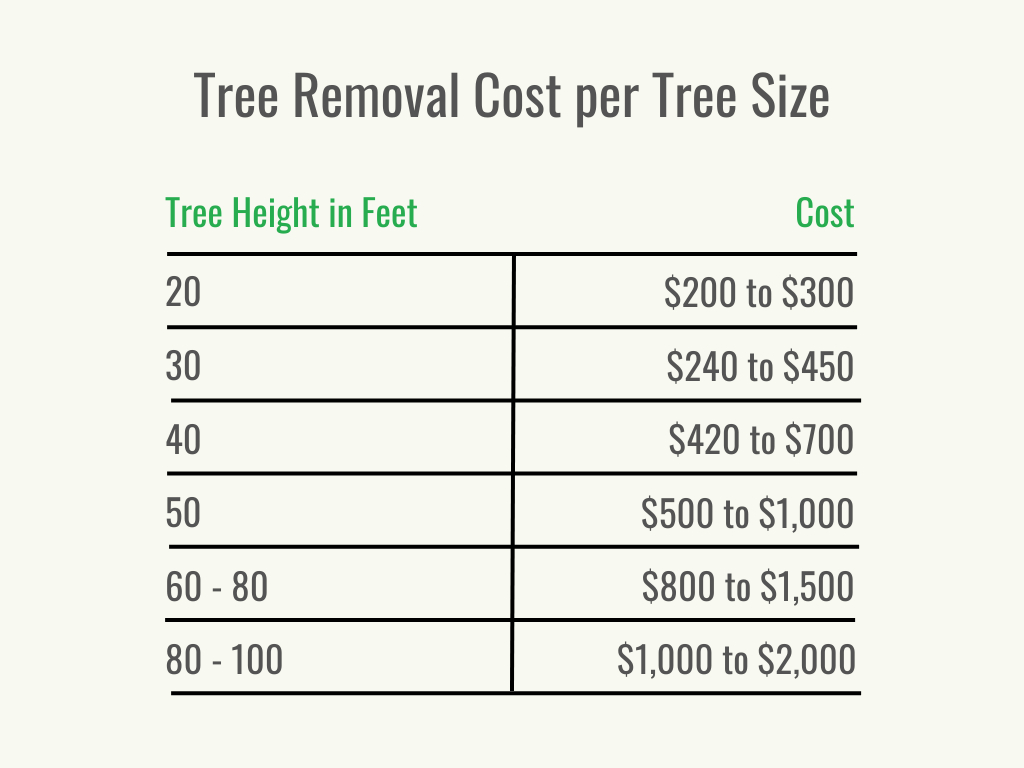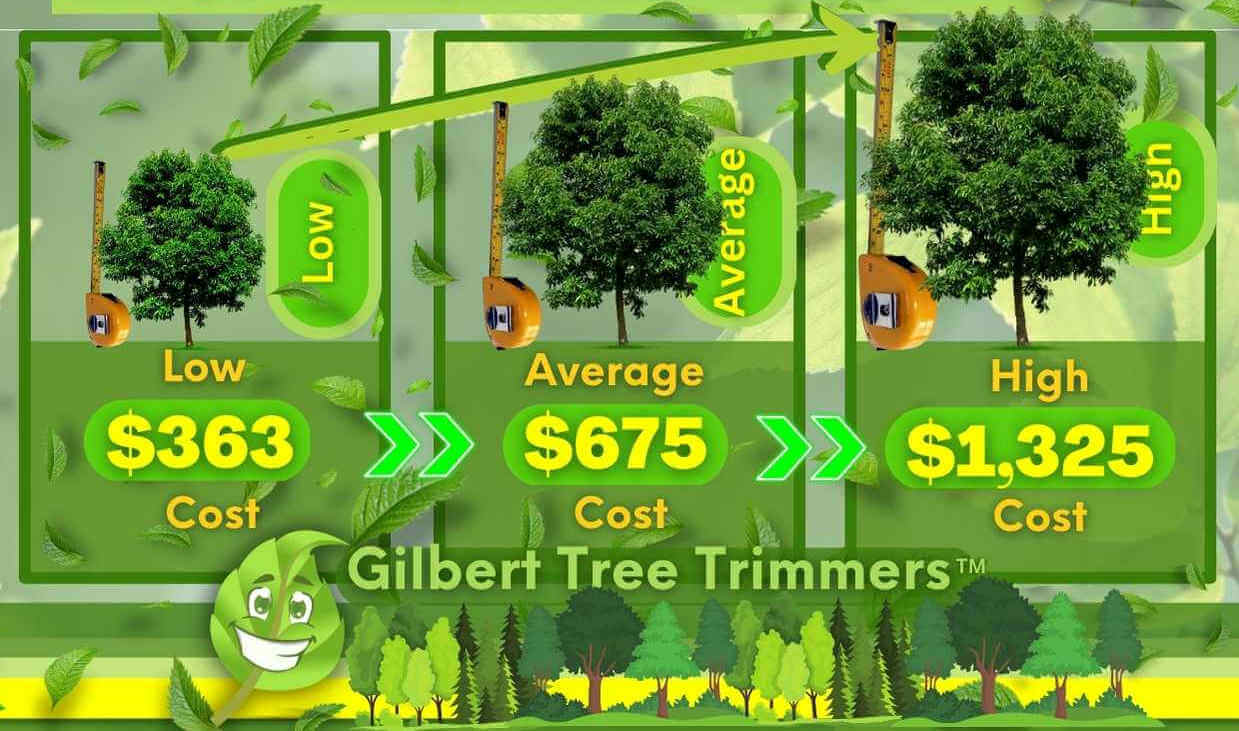Featured
Table of Contents
- – Van Wert, OH Stump Removal: Price Vs. Quality
- – Van Wert, OH Stump Grinding Fee Breakdown
- – Van Wert, OH Tree Clearing Service Cost Guide
- – Should You Hire A Stump Grinding In Van Wert,...
- – Get Stump Grinding Quotes In Van Wert, OH
- – Commercial Tree Clearing Pricing In Van Wert,...
- – Tailored Stump Grinding Costs In Van Wert, OH
- – Van Wert, OH Tree Service Customization Costs
- – Latest Tree Removal Costs In Van Wert, OH
- – Best Ways To Save On Tree Removal In Van Wer...
- – Van Wert, OH Tree Removal Customer Reviews
- – Van Wert, OH Tree Service: Actual Costs
- – Van Wert, OH Tree Cutting Price Overview
- – Van Wert, OH Stump Grinding Payment Options
- – Comparing Van Wert, OH Tree Removal: Prices

The subsections listed below supply more comprehensive information about pricing, consisting of an average variety for each. TypeAverage Elimination CostPineConiferPalmMagnoliaArborvitaeAshCedarSweet GumEucalyptusSycamoreCypressOakMaplePoplar You can anticipate to pay in between to remove a pine, depending upon its size. Getting rid of a pine is among the more economical tasks unless it is one that has actually been around for years and is quite big.
Van Wert, OH Stump Removal: Price Vs. Quality
Pines likewise have a tap root that grows deep into the soil, which can prove to be harder to remove. The process itself involves a professional cutting the tree, clearing the base, cutting the surface area roots, removing the stump, and lastly treating the soil. Without a professional hand, you run the risk of leaving pine seedlings behind, which will fall from the roots of distressed pines.
Van Wert, OH Stump Grinding Fee Breakdown
The U.S. nationwide average for conifer removal is roughly to have the conifer lowered, carried away, and the stump ground or eliminated entirely. Conifers are typically simpler to eliminate, and despite the fact that they can grow rather high, they do not cost a fortune to eliminate. Conifers consist of pine, spruce, fir, and juniper trees.
Van Wert, OH Tree Clearing Service Cost Guide
While conifers are gorgeous, they eliminate native plants and specific types of grass (stump grinding). The average price of palm elimination depends on the height as much as the type, varying from.
Should You Hire A Stump Grinding In Van Wert, OH
That is why it is necessary to know which type you are removing. While you do not need an herbicide to eliminate a palm tree, there are some actions your elimination specialist will need to take to make sure the task is done properly. There are 2 ways they can get rid of them: by slicing them down or digging them up.
Get Stump Grinding Quotes In Van Wert, OH
From there, they remove the actual tree and then the stump. Expect to pay between to eliminate this type of tree, depending on the exact size and details of the job.
Commercial Tree Clearing Pricing In Van Wert, OH
There are 3 types: green, white, and black ash. White ash is understood for its numerous colors. With its gray-tinged bark, its leaves are green or purple in the spring and golden yellow or purplish-red in the fall. They take pleasure in moderate environments and great deals of sun. The green ash is named such due to its green or yellow foliage.
Tailored Stump Grinding Costs In Van Wert, OH

Due to the variation in height, the removal rate variation is large from. A coniferous, evergreen tree, the cedar is a hardy species.
Van Wert, OH Tree Service Customization Costs
The development of false cedars varies from 50 feet up to 230 feet high. Homeowners may pay anywhere from, depending on the roots. With star-shaped leaves and spectacular fall colors, the sweet gum is thought about a medium to large tree. Enjoying full sun, the sweet gum can not endure contamination.
Latest Tree Removal Costs In Van Wert, OH
It has a big root base of 40 to 50 feet, which affects the removal cost. Generally, it costs in between to get rid of a eucalyptus. Eucalyptus are not typical everywhere, but they are rather big compared to others, which is why even the smaller ones are so expensive to get rid of. Initially from Australia, eucalyptus are intrusive plants that grow in thick groves that take out native plants.
Best Ways To Save On Tree Removal In Van Wert, OH
There are a handful of methods to do this, including burning, pulling, grinding, or eliminating them with herbicide. Anticipate to pay in between to eliminate sycamores, based upon the height, trunk size, and quantity of work included. Sycamores are one of the largest hardwood trees, usually ranging from 60 to 100 feet tall and as wide as 15 feet.
Van Wert, OH Tree Removal Customer Reviews
The first 2 steps will expose the within the tree and cut off the circulation of nutrients up the trunk. From there, a professional uses herbicide to eliminate the tree and lower the trunk. They will kill the stump. Otherwise, new sprouts might grow from it. Cutting down and getting rid of a mature cypress could cost as much as.
Van Wert, OH Tree Service: Actual Costs
There are several types of Cypress trees, but the most prevalent are the Leyland, Arizona, Bald, and Italian. The Bald Cypress grows in swampy or really wet areas while the others enjoy a dry, warm, or hot environment (tree clearing). They can grow as high as 80 to 100 feet tall
Van Wert, OH Tree Cutting Price Overview

Prone to diseases, the Cypress is among the most valued woods for furniture. The typical oak grows to around 60 feet, and depending upon the complexity of the removal, it costs an average of to eliminate. The precise size of your oak and the effort needed to fell it impact what you will really pay for elimination together with any extra services like stump grinding.
Van Wert, OH Stump Grinding Payment Options
Access to the trees and the roots will likewise impact the overall cost. Maples are typically among the more costly trees to get rid of because of their size and the work involved in the removal.
Comparing Van Wert, OH Tree Removal: Prices
Growing as high as 90 to 115 feet, these massive woods are mainly discovered in North America and consist of the aspen, cottonwood, and balsam trees. The procedure to eliminate trees includes all the trimming and cutting of the branches and trunk, bringing it down to a stump.
Table of Contents
- – Van Wert, OH Stump Removal: Price Vs. Quality
- – Van Wert, OH Stump Grinding Fee Breakdown
- – Van Wert, OH Tree Clearing Service Cost Guide
- – Should You Hire A Stump Grinding In Van Wert,...
- – Get Stump Grinding Quotes In Van Wert, OH
- – Commercial Tree Clearing Pricing In Van Wert,...
- – Tailored Stump Grinding Costs In Van Wert, OH
- – Van Wert, OH Tree Service Customization Costs
- – Latest Tree Removal Costs In Van Wert, OH
- – Best Ways To Save On Tree Removal In Van Wer...
- – Van Wert, OH Tree Removal Customer Reviews
- – Van Wert, OH Tree Service: Actual Costs
- – Van Wert, OH Tree Cutting Price Overview
- – Van Wert, OH Stump Grinding Payment Options
- – Comparing Van Wert, OH Tree Removal: Prices
Latest Posts
How To Save Money On An Stump Grinding In Van Wert, OH
How Much Does An Stump Grinding Cost In Berkley, MI
Rock Falls, IL Tree Trimming Quote Comparison Tool
More
Latest Posts
How To Save Money On An Stump Grinding In Van Wert, OH
How Much Does An Stump Grinding Cost In Berkley, MI
Rock Falls, IL Tree Trimming Quote Comparison Tool